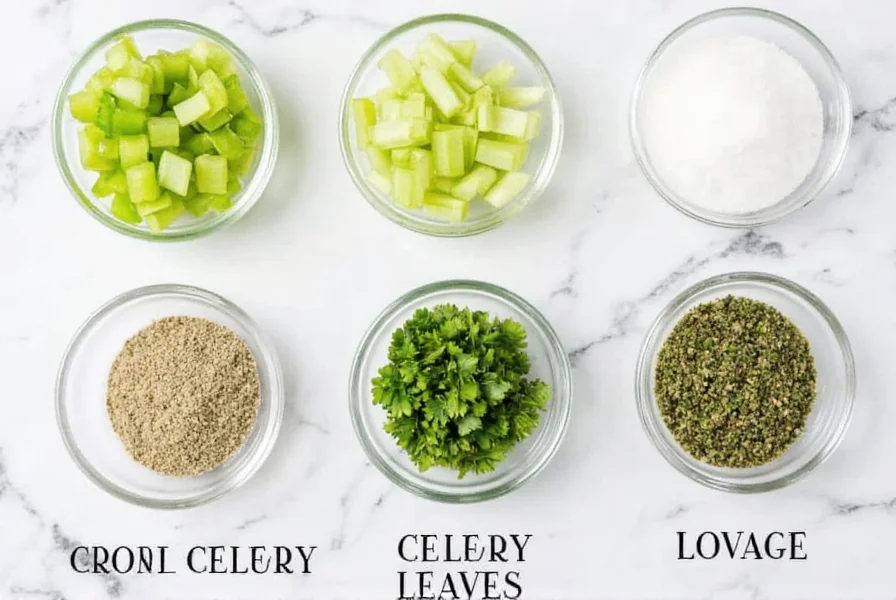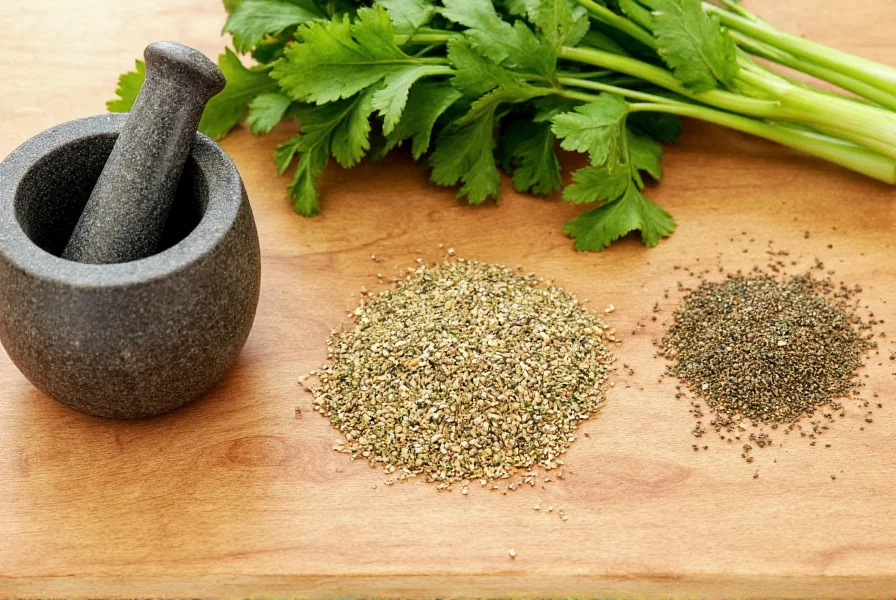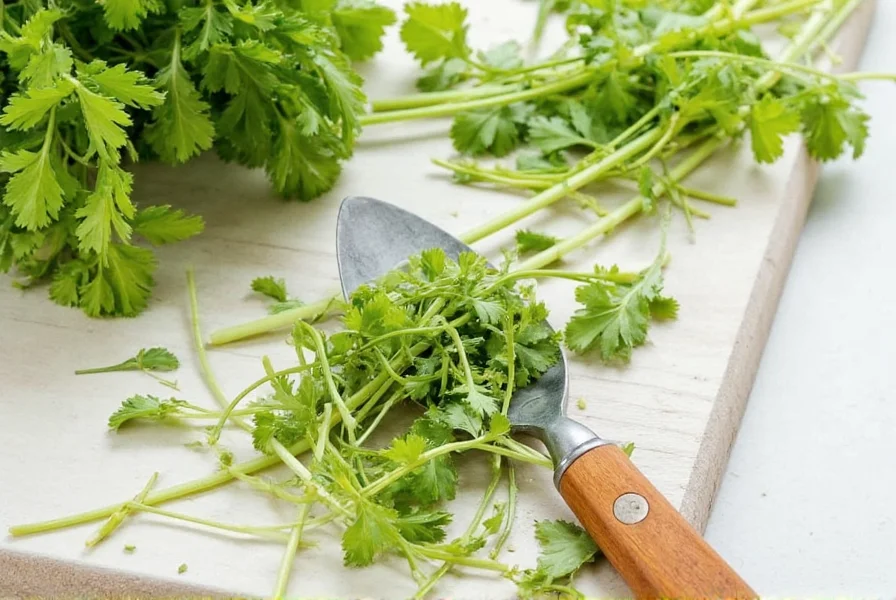If you're reaching for celery seed only to find your spice cabinet empty, don't panic. Many home cooks face this common kitchen dilemma when following recipes for soups, salads, or pickling solutions. Understanding what makes celery seed unique—its concentrated earthy, slightly bitter flavor with hints of parsley and lemon—helps identify suitable replacements that maintain your dish's intended taste profile.
Understanding Celery Seed's Flavor Profile
Celery seed comes from the seeds of wild celery (Apium graveolens) and packs a more intense flavor than the celery stalks we commonly eat. It has a distinctive earthy, slightly bitter taste with subtle notes of parsley, lemon, and pepper. This concentrated flavor makes it valuable in small quantities for seasoning blends, dressings, and pickling recipes. When seeking celery seed alternatives, consider whether your recipe needs the earthy notes, the slight bitterness, or simply the characteristic "celery" flavor.
Top 6 Substitutes for Celery Seed
1. Celery Salt (Best Overall Substitute)
Celery salt combines ground celery seed with salt, making it the closest flavor match. Use it when your recipe can accommodate additional sodium.
- Conversion ratio: 1/4 teaspoon celery salt = 1/2 teaspoon celery seed
- Best for: Bloody Marys, potato salad, tuna salad, and savory rubs
- Limitation: Adjust other salt in recipe accordingly
2. Fresh Celery (Best for Texture and Fresh Flavor)
When you need to replace celery seed in dishes where texture matters, fresh celery provides both flavor and crunch.
- Conversion ratio: 1-2 stalks finely chopped = 1/2 teaspoon celery seed
- Best for: salads, soups, and stews where visible celery pieces work well
- Tip: Mince extremely fine for recipes requiring powdered spice texture
3. Celery Leaves (Best for Fresh Dishes)
The leafy green tops of celery contain concentrated flavor compounds similar to the seeds.
- Conversion ratio: 1 tablespoon finely chopped leaves = 1/2 teaspoon celery seed
- Best for: garnishes, fresh salsas, and herb blends
- Storage tip: Freeze excess leaves in olive oil for future use
4. Lovage (Best for Intense Celery Flavor)
Lovage has a stronger celery-like flavor than celery itself and works well as a direct substitute.
- Conversion ratio: 1/2 teaspoon dried lovage = 1/2 teaspoon celery seed
- Best for: stocks, soups, and pickling recipes
- Caution: Flavor intensifies with cooking time
5. Dill Seed (Best for Pickling Recipes)
Dill seed shares some flavor compounds with celery seed, making it suitable for certain applications.
- Conversion ratio: 1/4 teaspoon dill seed = 1/2 teaspoon celery seed
- Best for: pickling cucumbers, coleslaw dressings, and fish dishes
- Note: Adds distinctive dill flavor that differs from pure celery notes
6. Fennel Seed (Best for Mediterranean Dishes)
Fennel seed offers a similar earthy quality with its own distinctive anise-like flavor.
- Conversion ratio: 1/4 teaspoon fennel seed = 1/2 teaspoon celery seed
- Best for: Italian sausages, roasted vegetables, and Mediterranean recipes
- Warning: Creates a different flavor profile—use only when complementary
| Substitute | Flavor Match | Best Recipe Types | Conversion Ratio |
|---|---|---|---|
| Celery Salt | ★★★★★ | Cold salads, Bloody Marys, rubs | 1/4 tsp = 1/2 tsp celery seed |
| Fresh Celery | ★★★☆☆ | Soups, stews, fresh salsas | 1-2 stalks = 1/2 tsp celery seed |
| Celery Leaves | ★★★★☆ | Garnishes, fresh dressings | 1 tbsp = 1/2 tsp celery seed |
| Lovage | ★★★★☆ | Stocks, pickling, hearty soups | 1/2 tsp = 1/2 tsp celery seed |
| Dill Seed | ★★★☆☆ | Pickling, fish dishes, coleslaw | 1/4 tsp = 1/2 tsp celery seed |
| Fennel Seed | ★★☆☆☆ | Mediterranean dishes, sausages | 1/4 tsp = 1/2 tsp celery seed |
Substitution Guide by Recipe Type
Not all celery seed substitutes work equally well in every dish. Consider these recommendations based on your specific recipe:
For Pickling and Brines
Dill seed provides the closest functional substitute in pickling recipes, though it adds its own distinctive flavor. Celery leaves work well in fresh refrigerator pickles but may discolor over time in canned pickles. For traditional dill pickles, a combination of dill seed and a small amount of fennel seed creates a complex flavor profile that mimics celery seed's contribution.
For Salad Dressings and Mayonnaise-Based Salads
Celery salt shines in creamy dressings and salads like tuna or chicken salad. The salt content helps emulsify dressings while providing flavor. If avoiding additional sodium, finely minced celery leaves incorporated directly into the dressing provide fresh celery flavor without altering texture.
For Soups and Stews
Fresh celery or lovage work best in long-cooking dishes. Add them early in the cooking process to allow flavors to meld. For finished soups needing a celery boost, a sprinkle of celery salt just before serving provides immediate flavor enhancement without requiring additional cooking time.
For Bloody Marys and Cocktail Seasonings
Celery salt remains the gold standard for Bloody Marys, but celery leaf powder (made by dehydrating and grinding leaves) offers a sodium-free alternative. For a more complex flavor, combine equal parts celery salt and dill seed for an elevated cocktail seasoning.

Common Substitution Mistakes to Avoid
Even experienced cooks make these errors when replacing celery seed:
- Using celery seed oil – This concentrated extract requires extreme caution (1-2 drops max) and isn't a practical substitute for most home cooks
- Overcompensating with quantity – Celery seed's flavor is potent; doubling substitutes usually creates imbalance
- Ignoring recipe chemistry – In baking or canning recipes, changing spice profiles can affect preservation or rising
- Adding substitutes too late – In cooked dishes, add substitutes early enough for flavors to meld (except celery salt, which should be added near the end)
Creating Your Own Celery Seed Substitute Blend
For frequent celery seed users, creating a custom blend ensures you're never without this essential spice. Combine:
- 2 parts dried celery leaves
- 1 part dried parsley
- 1/2 part dried dill weed
- Pinch of lemon zest powder
Store this mixture in an airtight container away from light. This homemade celery seed alternative maintains quality for 3-4 months. For immediate use, the fresh version combines 1 tablespoon each of finely chopped celery leaves, parsley, and dill with 1/4 teaspoon lemon zest.

When Substitution Isn't Recommended
While most recipes tolerate celery seed substitutions, certain specialty dishes rely on its unique chemical composition:
- Commercial canning recipes – Altering spice profiles can affect pH balance and safety
- Authentic Scandinavian aquavit – Celery seed is essential to traditional flavor profiles
- Certified competition barbecue rubs – Specific spice ratios are often required
In these cases, it's better to obtain proper celery seed rather than substitute. For most home cooking applications, however, the alternatives presented here will save your recipe without compromising quality.
Frequently Asked Questions
Can I use celery salt instead of celery seed in baking?
Yes, but with caution. Use 1/4 teaspoon celery salt for every 1/2 teaspoon celery seed called for, and reduce other salt in the recipe by 1/8 teaspoon. Celery salt works best in savory baked goods like cheese biscuits or herb breads, but avoid it in sweet baked goods where the saltiness would be noticeable.
What's the difference between celery seed and celery flakes?
Celery seed comes from the plant's seeds and has a concentrated, slightly bitter flavor. Celery flakes are dehydrated celery stalks with a milder, more vegetal taste. They're not direct substitutes—use 1 tablespoon celery flakes for 1/2 teaspoon celery seed, but expect a different flavor profile with less intensity and no bitterness.
How do I make celery seed powder from fresh celery?
Dehydrate celery leaves at 125°F (52°C) for 6-8 hours until brittle, then grind in a spice grinder. For stronger flavor, include small amounts of dehydrated celery root. Note this creates a milder product than true celery seed—use 1 teaspoon homemade powder for every 1/2 teaspoon commercial celery seed.
Why do some recipes specify celery seed instead of fresh celery?
Celery seed provides concentrated flavor without adding moisture or texture. In dry rubs, spice blends, and pickling solutions, it delivers consistent celery flavor without altering the recipe's liquid balance. Its small particle size ensures even distribution in dry applications where fresh celery would be impractical.
Can I substitute ground celery seed for whole celery seed?
Yes, with a 1:1 ratio for most recipes. Ground celery seed disperses flavor more quickly but loses potency faster. Use ground celery seed in liquid-based recipes like soups and dressings, while whole seeds work better in dry rubs or pickling where gradual flavor release is beneficial. For best results, grind whole seeds fresh when possible.











 浙公网安备
33010002000092号
浙公网安备
33010002000092号 浙B2-20120091-4
浙B2-20120091-4